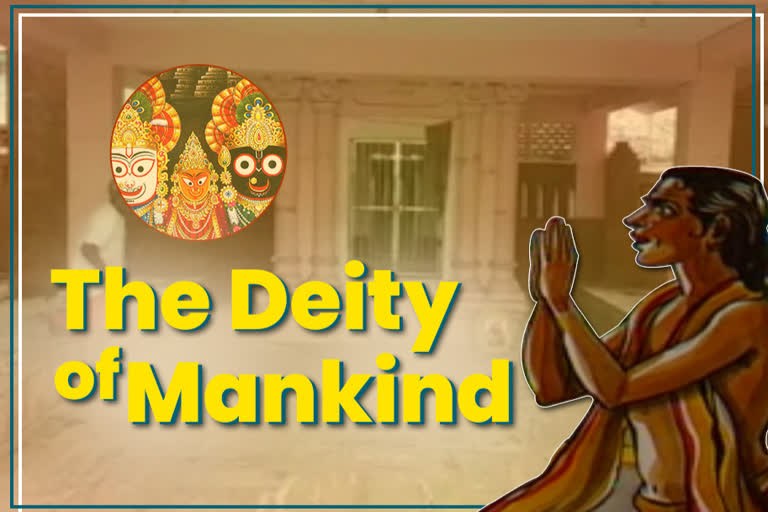Puri: Lord Jagannath's Rath Yatra, the centuries-old chariot procession is not only a religious ritual but also a showcase of how the Jagannath consciousness has long enriched the cultural heritage of Odisha.
Lord Jagannath is reputed as the protector of his devotee for ages together. He has been accepted in high esteem not only by the Hindus but by many devotees of other religions.
There have been several devotees, whose devotion became a part of the folklore associated with the lord of the Universe (Jagannath).
But a Muslim devotee of Jagannath, named Salabega occupies a permanent position among the devotional poets of Odisha who devoted his life for the Holy Trinity.
There are several folklores associated with Jagannath temple which throw light on Salabega’s deep devotion for the Lord. However, to ascertain his exact origins and identity, using the literary proofs that exist beyond his creations, it can be assumed that Salabega was born in the early 17th century.
The great devotee of Lord Jagannath Salabega was born in a Muslim family. His father Lalbega was a warrior in the Mughal army. It is alleged that his mother Fatima Biwi was a converted Muslim. It is also alleged that she was a Hindu Brahmin widow, who was kidnapped by Lalbega while returning from Puri.
Speaking to ETV Bharat, Suryanarayan Rathasharma, Servitor and Scholar of Jagannath Culture, said, "Salabega’s father was a Mughal Commander in and his mother came from a conservative Brahmin family. Although Salabega remained as a Muslim till his last, he was deeply attached to the Hindu religion having been brought up by his mother. Once while he was suffering from a disease, his mother advised him to remember, pray, and dedicate himself before Lord Jagannath. After he did that he was miraculously cured of the disease due to mercy of Lord Jagannath. After this extraordinary experience, Salabega completely surrendered before Lord Jagannath."
"Another incident happened during Ratha Yatra. When the Chariot of Lord Jagannath came closer to the house where Salabega was staying, he started weeping. And suddenly the chariot stopped there. Salabega made darshan of The Lord very happily and after that, the chariot started moving. After the incident, all came to know about the great bhakta of Lord Jagannath," Rathasharma said.
As the legend goes, after getting a glimpse of Lord Jagannath, Salabega started living in Puri and composed his 'bhajans' while living at the same place for the rest of his life. After his death, Salabega was cremated at this very location where now lies his Samadhi at Badananda in Puri’s Grant Road.
Here it is one of the transcriptions of his famous devotional song named, 'Aahe Neela Shaila'
"Oh! The Lord of Blue Mountains;
Friends, Let us all see the Black God Jagannath on the blue mountains;
Your life is devoted to your devotees;
Oh! The Supreme Lord Sri Jagannath."
Like this, many devotional songs authored by Salabega in Odia are not just ordinary prayers. Salabega’s literary contributions also came at a time when the Bhakti movement in India had reached its pinnacle. They are an inseparable part of Jagannath culture and also form part of daily prayers and hymns of the people of Odisha.
Like Salabega, there are several stories of several devotees, including Dasia Bauri who belonged to a lower caste, and Dinakrishnadas who was a leprosy patient were not allowed inside the temple but approached Lord Jagannath through their poetry. But Salabega holds greater importance because his poems and writings became an integral part of the Jagannath tradition.



